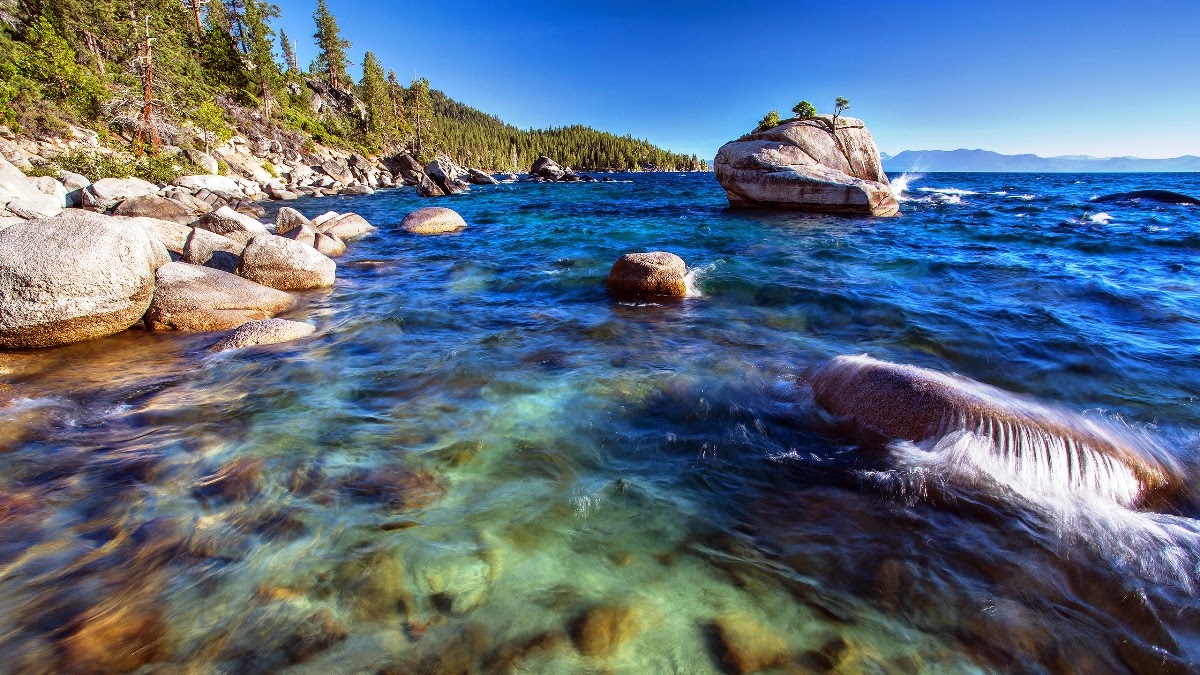The unseen beauty of Bonsai Rock
is located a little south of Sand Harbor, it is on the east side of Lake Tahoe the
Nevada side, USA. Bonsai Rock has about four trees which look like they’re just
bursting out of the rock. The trees seem to be miniature same like a Bonsai
Tree due to the fact that the rock is limiting the trees’ development. The sun
setting over Bonsai Rock is a magnet for photographers and as you can see from
the amazing shots below for a good reason. Bonsai Rock is simply can say a distinctive
place, as trees growing out of the rock. The trees look to be Bonsai Trees
because of the fact that the trees growth is prohibited by the rock itself. Bonsai
is an art form but this may be an example of naturally occurring Bonsai. For
photographers, Bonsai Rocks in Lake Tahoe in California/Nevada should earn a place
on your bucket list. The epic rock formations makes for amazing images commonly
known as ‘Bonsai Rock’, a small boulder close to the shore line that has tiny
little trees growing from the top against all odds.
Getting to Bonsai Rock is a bit
tricky to bear. It is semi steep and unstable path and make sure you’re wearing
the proper shoes. Photographers love this place when sun is setting behind
Bonsai rock. That’s the right to capture the real beauty of Bonsai Rocks. Bring
your tripod, camera with wide angle lens, filters, and it wouldn’t hurt to have
a cable release. Do take caution. It wouldn’t recommend this spot to anyone
with disabilities and it wouldn’t hurt to take a buddy with you just in case. This
place has various challenges but if you come prepared it’s worth all the
trouble. You will come away with some delightful photos.
Most photographers suggest going
in summer for low tide shots that expose more of the white sand and smaller
rocks. This will also give you more foreground options and give ‘Bonsai Rock’ a
little more height. However; If you go in winter and get those amazing shots
that have snow on the rocks and mountains. If you ski as well you’ll be in
heaven.

























































